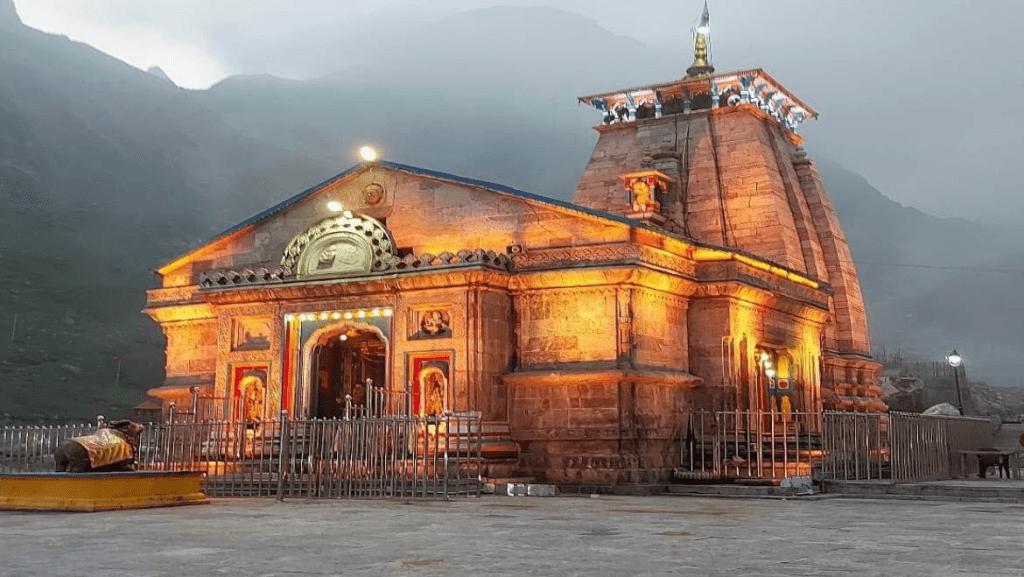Introduction
India, a land rich in spirituality and cultural diversity, is home to numerous sacred sites that hold immense significance in Hinduism. Among these, the 12 Jyotirlingas, also known as the ‘Luminous Lingas,’ are considered some of the holiest shrines in the country. These sacred abodes of Lord Shiva are not only revered for their spiritual aura but also attract countless devotees and tourists due to their historical and mythological importance. In this blog, we will take you on a spiritual journey to explore the 12 Jyotirlingas in India and delve into their fascinating history.
1. Somnath Temple, Gujarat

Located on the western coast of Gujarat, the Somnath Temple is believed to be the first among the 12 Jyotirlingas. The temple’s history dates back to ancient times, with references to its existence in various scriptures. It has been rebuilt several times after being destroyed by invaders, and the current temple is a symbol of resilience and unwavering faith.
2. Mallikarjuna Temple, Andhra Pradesh

Situated in the picturesque town of Srisailam in Andhra Pradesh, the Mallikarjuna Temple is the second Jyotirlinga. This temple is associated with many legends and is located on the banks of the holy Krishna River, adding to its spiritual charm.
3. Mahakaleshwar Temple, Madhya Pradesh

The Mahakaleshwar Temple in Ujjain, Madhya Pradesh, houses the third Jyotirlinga. It is famous for its unique idol of Lord Shiva, which is said to be a swayambhu (self-manifested) lingam. The temple’s history is intertwined with various dynasties and rulers of India.
4. Omkareshwar Temple, Madhya Pradesh

Omkareshwar, situated on an island in the Narmada River, is home to the fourth Jyotirlinga. The temple’s design is unique as it resembles the symbol ‘Om,’ and the island itself is shaped like the same sacred syllable. This adds a profound spiritual dimension to the site.
5. Kedarnath Temple, Uttarakhand

Nestled in the Garhwal Himalayas, the Kedarnath Temple is the fifth Jyotirlinga and is part of the Char Dham Yatra. The temple has a remarkable history and is situated amidst breathtaking natural beauty, making it a must-visit for pilgrims and nature enthusiasts.
6. Bhimashankar Temple, Maharashtra

The Bhimashankar Temple in Maharashtra houses the sixth Jyotirlinga. It is known for its unique black stone lingam and its association with a legendary battle between Lord Shiva and the demon Bhima.
7. Kashi Vishwanath Temple, Uttar Pradesh

One of the most revered temples in Varanasi, the Kashi Vishwanath Temple is home to the seventh Jyotirlinga. Varanasi itself is considered the spiritual heart of India, and this temple is at its epicenter.
8. Trimbakeshwar Temple, Maharashtra

Situated in the Nasik district of Maharashtra, the Trimbakeshwar Temple houses the eighth Jyotirlinga. This temple is renowned for its striking architecture and its association with the sacred Godavari River.
9. Vaidyanath Temple, Jharkhand

The Vaidyanath Temple, also known as Vaijnath Temple or Baidyanath Dham, is the ninth Jyotirlinga and is located in Deoghar, Jharkhand. This temple has a fascinating history and is believed to have healing powers.
10. Nageshwar Temple, Gujarat

Located near Dwarka in Gujarat, the Nageshwar Temple is home to the tenth Jyotirlinga. It is known for its serene ambiance and is a must-visit for Lord Shiva devotees.
11. Rameshwar Temple, Tamil Nadu

The Rameshwar Temple, located on the beautiful island of Rameshwaram in Tamil Nadu, is the eleventh Jyotirlinga. This temple is renowned for its exquisite Dravidian architecture and its association with the epic Ramayana.
12. Grishneshwar Temple, Maharashtra

The Grishneshwar Temple, situated near Ellora Caves in Maharashtra, is the twelfth and final Jyotirlinga. It is famous for its intricate sculptures and carvings.
Conclusion
The 12 Jyotirlingas in India not only hold immense religious significance but also offer a glimpse into the rich history and cultural heritage of the country. Pilgrimage to these sacred shrines not only strengthens one’s spiritual connection but also provides an opportunity to explore the diverse and vibrant tapestry of India’s religious traditions. These Jyotirlingas stand as a testament to the enduring faith of devotees and the timeless legacy of Lord Shiva in the hearts of millions.

